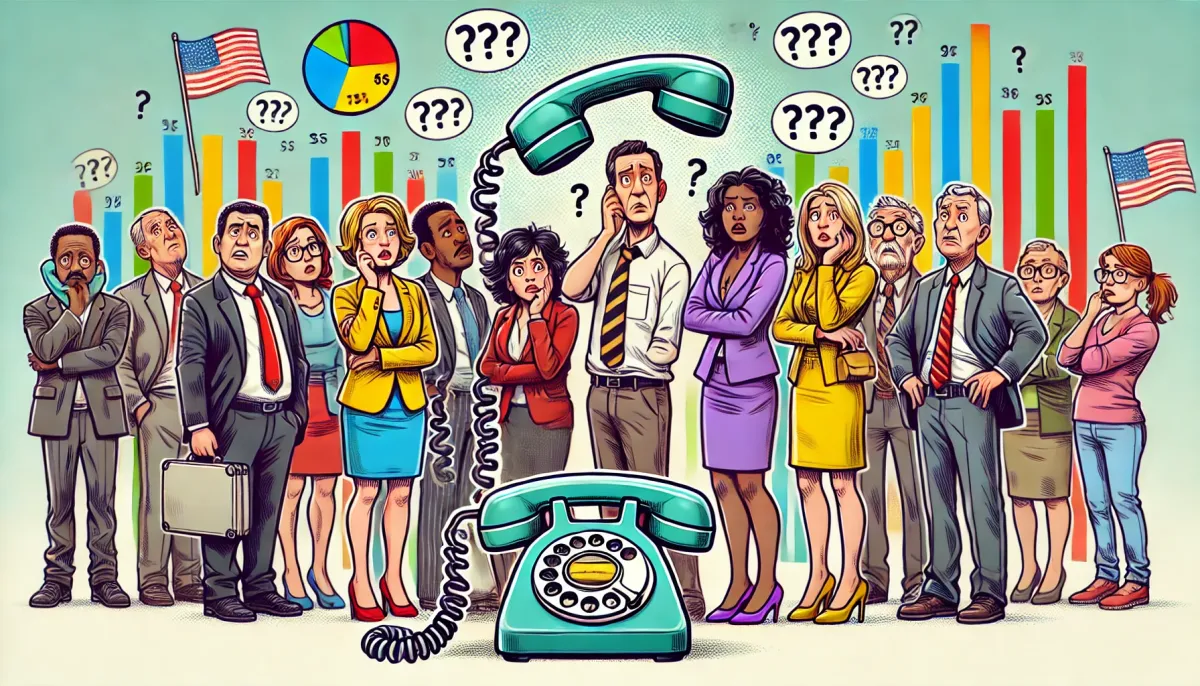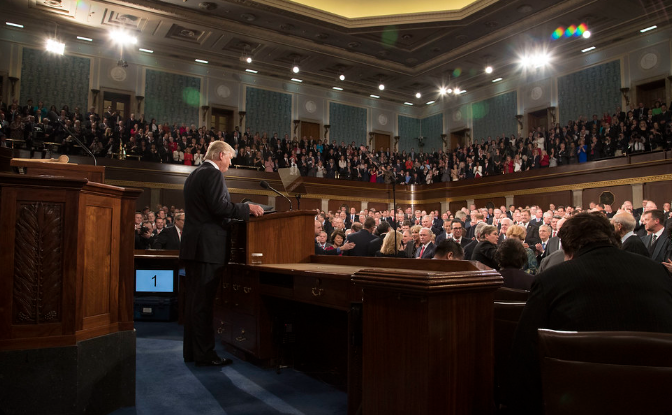Who Really Takes Political Polls? The Truth Behind Polling Mysteries
Who actually takes political polls? Ever wondered if these mysterious poll-takers are even real? Find out why polling results are often misleading.

Who Are These Mysterious People Taking Political Polls?
Have you ever wondered who these mysterious individuals are that seem to always participate in political polls and have their finger on the pulse of the nation's opinions? Every week, we're presented with yet another poll with some headline-grabbing prediction, and it begs the question: who actually takes these polls? Are these people even real, or are they figments of the media’s imagination?
Personally, I’ve never been polled. None of my friends have either. Even in my extended circle, no one has ever mentioned being polled. So who are these people? Are they living in some hidden village where everyone answers strange phone calls from random numbers? Because where I’m from, we all have more important things to do.
What Are Polls and Why Are They So Inconsistent?
Before diving too deeply into skepticism, let's take a step back and talk about what polls actually are and how they're conducted. Polls are surveys used to gauge public opinion on various issues, from political candidates to policy questions. They’re typically conducted by research firms or media organizations that use random sampling methods to try to get an accurate representation of the population.
Pollsters usually gather data through phone calls, online surveys, or even in-person interviews. The idea is to collect responses from a sample of people that represents the broader population, which is why you’ll often hear about “likely voters” or “registered voters.” Random sampling is supposed to reduce bias, and the data is then weighted to account for demographic factors like age, gender, and geography. In theory, this should give us a snapshot of public sentiment at any given time.
But here’s the catch: there are a lot of variables that can impact how accurate a poll is. Response rates for phone surveys have plummeted in recent years—most people, myself included, simply don’t pick up calls from unknown numbers. That means pollsters often end up relying on those who do, which can skew results. Additionally, how questions are worded, the timing of the survey, and the sample size can all significantly influence the outcome. So, while polling is a tool meant to approximate public opinion, it’s far from perfect.
Who Gets Polled, and Why Should We Care?
Let’s be honest here. The latest poll I saw suggested that Florida might go blue for Kamala Harris in 2024. Florida. For Kamala. Now, I’m not saying that’s entirely impossible, but it’s pretty improbable. It’s like saying alligators are suddenly going to become vegans. Sure, Florida can be unpredictable, but this? The last time something like that seemed plausible was when Obama, with his remarkable oratory skills, was inspiring hope across the country. But Kamala? The same Kamala Harris whose primary campaign barely generated any excitement? I’m just not seeing it.
Maybe it’s just me, but the only polls I’ve ever taken part in were on social media platforms like Twitter, and those were more along the lines of “What’s the best pizza topping?” rather than “Who do you trust with nuclear codes?” And frankly, I trust the pizza results more than the latest “poll of likely voters.”
The people who actually participate in these political polls must be a unique group. They’re probably retired, own a landline, and somehow don’t mind answering calls from “UNKNOWN CALLER.” They’re likely the type who still take surveys printed on their CVS receipts, just for the fun of it. And while I have nothing against them—God bless their patience—are these really the individuals we want shaping the national political narrative? Meanwhile, I’m busy making sure my internet connection is stable enough to stream my favorite news show, while they’re giving their opinions on the state of the economy to a stranger over the phone.
Polling isn’t a new phenomenon; it’s been around for decades, and its track record has been mixed at best. Sure, there have been times when polls have accurately predicted election outcomes, but there have also been some high-profile failures. Take the 1948 presidential election, for instance. The polls had predicted a win for Thomas Dewey over Harry Truman, leading to the famous “Dewey Defeats Truman” headline that Truman gleefully held up after his surprise victory. More recently, the polling errors of 2016 showed us just how wrong the numbers can be. Polling is a human endeavor, and like all human endeavors, it’s subject to error.
The Influence of Polls: Are They Changing the Game?
Polls don’t just reflect public opinion—they can shape it. When a poll shows a candidate leading by a wide margin, it can create a “bandwagon effect,” where people support that candidate simply because they seem to be winning. Conversely, polls can also create voter apathy. If voters believe their candidate has no chance of winning, they might decide it’s not even worth showing up at the polls. This influence on voter behavior means that polls have power beyond mere prediction—they can actually alter the outcome they’re trying to measure.
The world has changed, and polling has struggled to keep up. With the rise of mobile phones, fewer people are reachable by traditional landline methods, and response rates have plummeted. Many people simply don’t want to spend time answering questions, especially from unknown numbers. Online surveys offer an alternative, but they come with their own set of challenges, including self-selection bias—where only those motivated enough to participate actually do. In an age where trust in institutions is waning, convincing people to participate in polls has become harder than ever, adding another layer of complexity to getting accurate results.
The Digital Age: Alternatives to Traditional Polling
So, if traditional polling has so many issues, what are the alternatives? Some researchers are turning to big data analysis, using social media activity, Google search trends, and other digital footprints to gauge public opinion. Sentiment analysis on social media platforms like Twitter can give a real-time sense of how people are feeling about a candidate or issue. Focus groups, while not as broad in scope as polls, can provide deeper insights into why people feel the way they do. These methods aren’t perfect, but they offer a different way of understanding public sentiment that might complement or even replace traditional polling down the line.
The rise of social media has changed how we communicate, and it has also changed how we gauge public opinion. Platforms like Twitter, Facebook, and Google Trends offer a window into what people are talking about, often more candidly than they would be in a formal poll. While social media analysis can’t replace traditional polling methods, it offers another layer of insight. For example, a trending topic on Twitter might indicate growing interest or concern over an issue that pollsters haven't even started to ask about yet.
Polling: The Human Element and the Real World
At the end of the day, polling is about people. And people are unpredictable, nuanced, and sometimes just plain stubborn. What motivates someone to answer a poll? Are they bored? Do they genuinely care about the issue? Understanding the psychology behind who participates in polls can help explain why the results often don’t match reality. The people who pick up the phone or fill out an online survey aren’t always representative of the broader population, and that’s a problem that even the most sophisticated weighting can’t always fix.
So, the next time you come across one of these polls, remember: it’s not you, it’s them. Somewhere out there, someone is taking these calls, giving their opinion, and shaping the headlines we read. But does that person really represent you? Your family? Your neighbors? If they do, I’d be genuinely surprised. Until then, I’ll remain unpolled, still wondering when they’re finally going to get it right.
Conclusion: Polls—A Tool, Not a Gospel
Polls are fascinating, flawed, and, at times, incredibly influential. They provide a glimpse into what people might be thinking, but they are far from perfect. In the digital age, with the rise of big data and social media, we have more ways than ever to gauge public sentiment, but we should always take polling results with a grain of salt. Whether or not you believe in what the latest poll says, remember that the only opinion that really counts is the one you make at the ballot box.





Comments ()